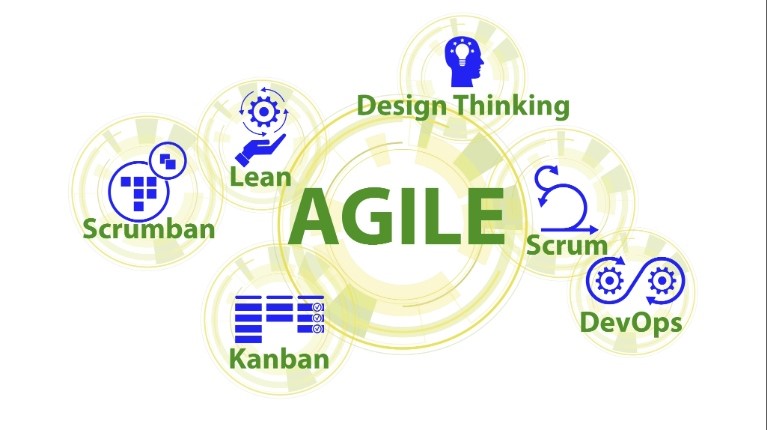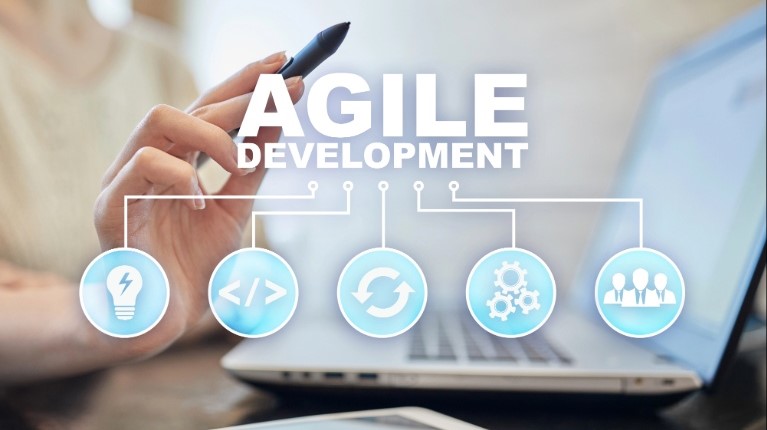Agile Planning Process: A Step-By-Step Guide

Organizations today face constant pressure to innovate more quickly, adapt to rapidly shifting markets, and deliver products that create genuine value. Traditional project planning models, with rigid timelines and little room for change, no longer meet the demands of modern business.
Agile planning offers a path forward. It shifts the focus from exhaustive up-front plans to iterative cycles. Teams can deliver value in smaller increments, gather feedback, and continuously adjust.
The results speak for themselves. Nearly 70 percent of businesses now use Agile techniques, and more than half of them report higher profitability as a result. Beyond the numbers, Agile planning improves customer satisfaction and promotes collaboration across departments.
What Is Agile Planning?
Agile planning is the process of structuring work into short, manageable cycles with a focus on flexibility and responsiveness. Instead of locking a project into a detailed plan at the beginning, teams build a roadmap of goals and then adapt along the way as new information, challenges, or user needs emerge. This iterative approach creates a pace of progress where every sprint delivers tangible outcomes.
A sprint is a defined block of time (typically two to four weeks) during which teams focus on a specific set of tasks. These tasks (known as user stories) capture requirements from the end user’s perspective.
A simple example might be: “As a user, I want to receive a notification when a task is assigned to me so I can respond quickly.” Structuring work around user stories keeps the focus on value rather than features alone.
The beauty of Agile planning lies in its ability to adapt. Teams can respond to customer feedback, address emerging issues, and reprioritize work without derailing the entire project. Instead of worrying about adhering to a static plan, the focus remains on continuous delivery and achieving meaningful outcomes.
The Characteristics of Agile Planning
Agile planning has several core characteristics that set it apart from traditional methods. The first is its release and sprint structure. Projects progress through multiple releases, each divided into shorter sprints. Every sprint produces working features that can be tested, reviewed, and released.
The second characteristic is its reliance on user stories. Rather than writing technical specifications that describe precisely how a feature should be built, teams describe the need from the user’s perspective.
Agile planning is also iterative and incremental in nature. Each sprint builds on the previous one, and progress is reviewed regularly. This structure gives teams insight into their capacity, highlights bottlenecks, and reveals opportunities for improvement.
Work estimation is another part of the process. Teams assign story points to user stories to quantify complexity, which helps everyone understand workload distribution and make realistic commitments.
Perhaps the most defining trait of Agile planning is its collaborative nature. Teams plan together, estimate together, and adapt together. This collective approach removes silos and builds stronger trust across roles.
Agile Planning Process: Step-by-Step Guide
The Agile planning process can be visualized as layers, sometimes referred to as the Agile planning “onion.” It starts broadly at the strategic level and narrows down to daily execution. Together, these layers create a flow from vision to action.
Defining the Vision
Every project begins with a clear understanding of what the organization wants to achieve. The vision aligns long-term goals with customer needs, establishing the foundation for everything else.
Setting Expectations
Stakeholders and teams must agree on what success looks like. Even though the details of the plan will evolve through iterations, the desired outcome remains constant. Alignment at this stage prevents miscommunication later.
Building the Roadmap
A roadmap provides a high-level view of milestones, deliverables, and major releases. Instead of overwhelming teams with every possible detail, the roadmap guides direction while leaving room for flexibility.
Creating Actionable Tasks
Once the roadmap is in place, the focus shifts to creating actionable tasks. User stories bring clarity here. Each one describes what the user wants to achieve and why it matters.
Managing the Backlog
The backlog is a dynamic list of tasks and stories that change over time. Not everything will fit into the current sprint, but nothing gets lost. Prioritization helps the most valuable work rise to the top.
Iteration Planning
Iteration planning determines which backlog items move into the sprint. Teams define sprint goals, estimate effort, and agree on deliverables. With everyone aligned, the sprint begins.
Daily Stand-Ups
Daily stand-ups help maintain momentum by surfacing issues early and keeping everyone aligned. These quick meetings create transparency and maintain focus.
Monitoring and Adapting
The process closes with monitoring and adapting. Progress is reviewed, deviations are addressed, and retrospectives provide opportunities to improve. Each sprint concludes with working features and valuable insights that directly inform the next cycle.
Scaled Agile PI Planning
Agile planning works well at the sprint and release level for smaller teams. However, enterprises often need to coordinate across multiple teams, portfolios, and business units.
Program Increment (PI) planning extends Agile principles across the enterprise. Instead of planning for a single sprint, organizations align multiple teams around shared objectives over several months. PI planning brings together product managers, developers, and stakeholders to synchronize priorities, allocate resources, and manage dependencies.
This level of planning bridges strategy and execution on a large scale. It keeps teams autonomous while maintaining alignment with broader business goals.
The Role of Agile Planning Tools
The success of Agile planning often depends on the tools organizations use to support it. Teams need visibility into roadmaps, backlogs, and sprint progress. Leaders need insight into portfolio-level metrics. Collaboration must be seamless across distributed teams.
Advanced enterprise Agile planning tools consolidate all these elements in one place. They help teams prioritize effectively, visualize progress, and align their work with strategic objectives. Integration with existing systems means organizations can adapt without disrupting workflows.
Agile project management solutions offer specialized capabilities for product-focused organizations. They can manage product roadmaps, refine backlogs, and drive product development lifecycles.
Agility at Every Level
Agile planning gives organizations the structure they need to stay focused and the flexibility they need to adapt. From vision to daily stand-ups, the process maintains momentum and creates continuous opportunities for improvement. Scaled Agile PI planning extends this approach to the enterprise level.
At Radus Software LLC, we built Metronome to help organizations embrace this process. Metronome combines AI-powered collaboration with intuitive design and enterprise-ready scalability. From sprint planning to PI planning, it simplifies complexity and keeps your teams in sync with strategy at every level.
Request a demo and see how Metronome can transform the way you plan, collaborate, and deliver.



